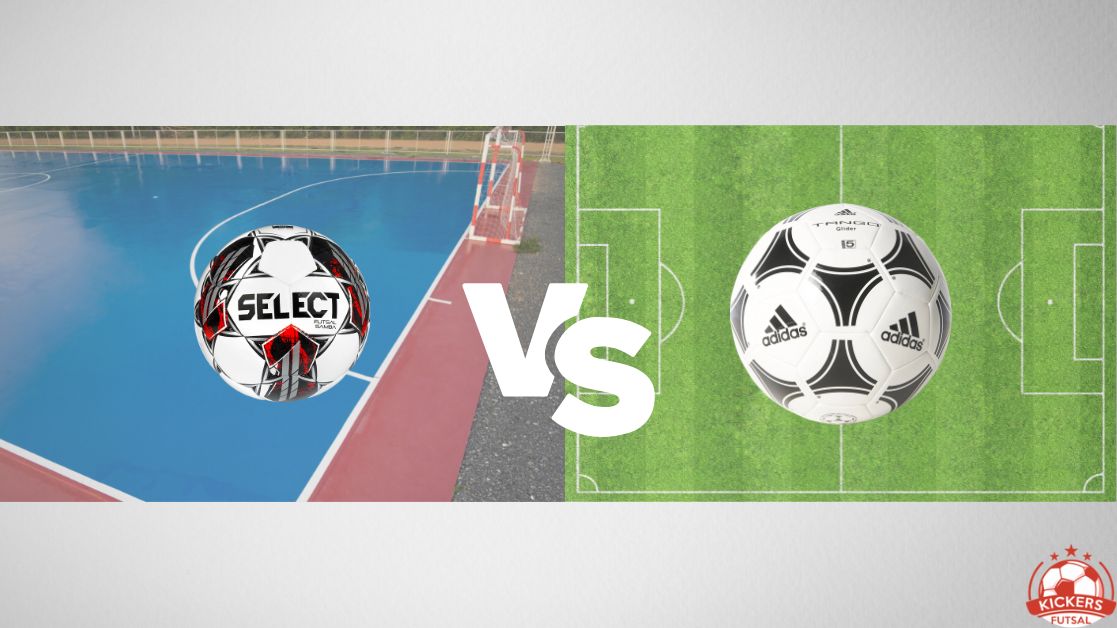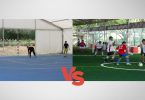Because futsal is an indoor version of football or soccer, some people may be perplexed by the distinction between soccer and futsal balls.
Here is a detailed explanation to help you distinguish between a futsal ball and a soccer ball.
1. Size
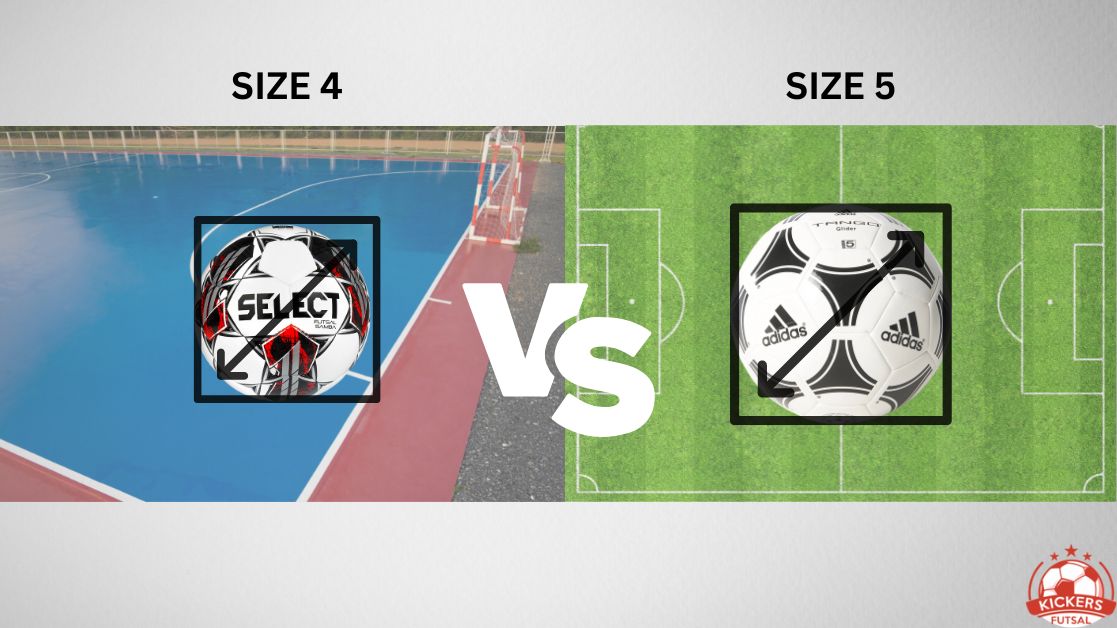
Futsal balls are generally smaller compared to soccer balls. An official futsal ball is a size 4 football with 30% less bounce than a conventional football, which is widely used in 11-a-side games. Soccer, on the other hand, is commonly played with a size 5 soccer ball.
Futsal balls have a circumference of 62 and 64 centimeters (24 and 25 inches). On the other hand, soccer balls have a circumference of 68 to 70 cm (27 to 28 inches).
Because futsal goals are so small, a large ball isn’t actually necessary because goalkeepers can handle even small balls.
Since most futsal balls are constructed to be smaller and lighter than soccer balls, they are thought to be more suited to the typical male posture.
Aside from that, the size of the futsal ball was intended for futsal players to have better control. It is also the reason for futsal’s fast-paced gameplay.
2. Weight
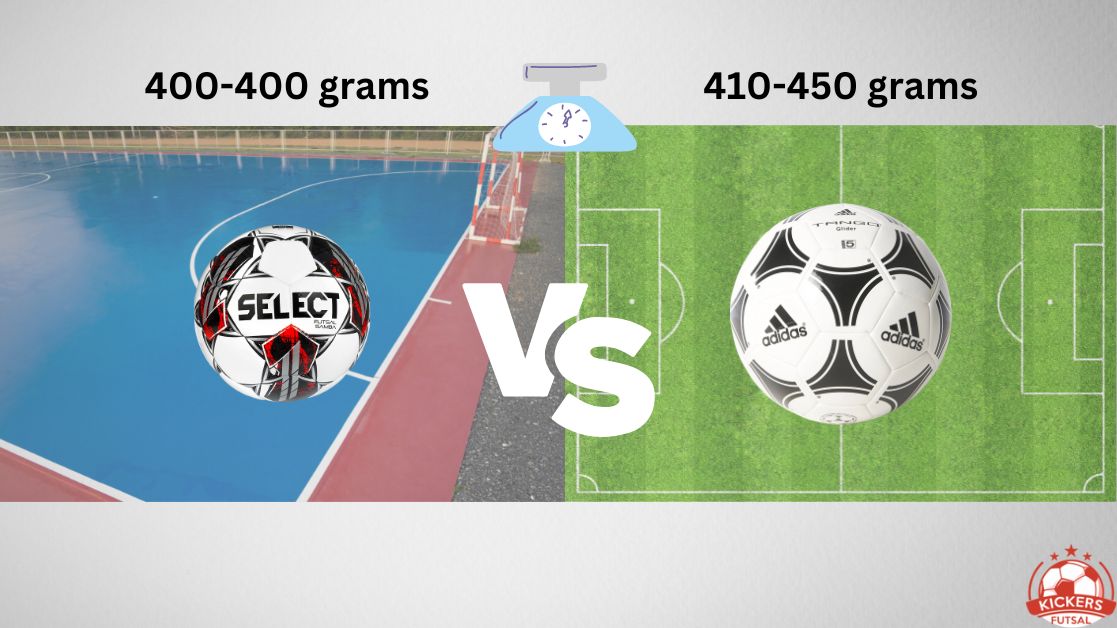
A soccer ball weighs between 410 to 450 grams while a futsal ball is lighter weighing 400 to 440 grams.
In essence, the soccer ball is purposefully made lighter to minimize impediments between the patterns of the grass. The ball can then bounce higher or farther in this manner.
The futsal ball, however, has weight intentionally added to it so that the reflection that develops as a result of contact with the futsal field is kept and is simpler for the players to handle.
3. Diameter
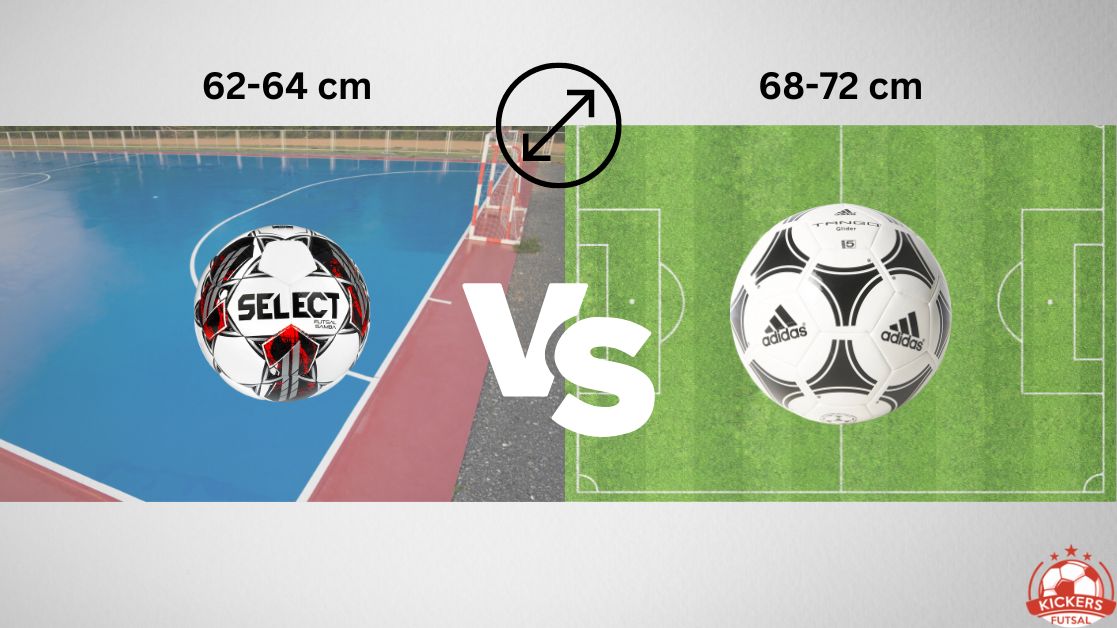
Since futsal balls are smaller than soccer balls, they also are smaller in diameter. Soccer balls typically have a diameter of 68 to 72 cm, while futsal balls are typically produced with a diameter between 62 and 64 cm.
4. Material
When it comes to the exterior covering material, the soccer ball is usually constructed of rubber. Some of them are made with additional synthetic materials created by high-quality companies so that they can withstand field use.
Futsal balls, on the other hand, are typically composed of synthetic leather. They generally contain foam, cotton, or other materials that lessen bounce and soften them.
5. Reflectivity
Compared to a soccer ball, the futsal ball will appear to have significantly less reflectivity. This occurs as a result of the futsal ball’s actual weight, which was previously mentioned.
Trapping the ball is simpler in futsal than in soccer. When a futsal ball is caught by your foot, chest, or thigh it won’t bounce back very swiftly.
A soccer ball, on the other hand, is more springy and is therefore more prone to veer off when you try to stop it.
Why Futsal Balls are Smaller and Less Bouncy?
Futsal goals are roughly one-third the size of soccer goals. An official futsal goal measures 3 meters wide by 2 meters high which is much less than a soccer goal.
The futsal ball is created to satisfy the specific needs of the game and there is a reason why a futsal ball is so hard. A heavier ball provides more control and speed, making for a far more competitive and fast-paced play. When you combine the smaller goal size with the fast pace, you have a game that is very different from football.
Conclusion
Soccer and futsal are two separate sports, and one of their primary differences is the type of ball used in play. Make sure you use the right ball for your game now that you are aware of the distinctions between a futsal ball and a soccer ball. Remember that poor ball selection can endanger players and lower the quality of gameplay so make sure to check this list of the best futsal balls.

